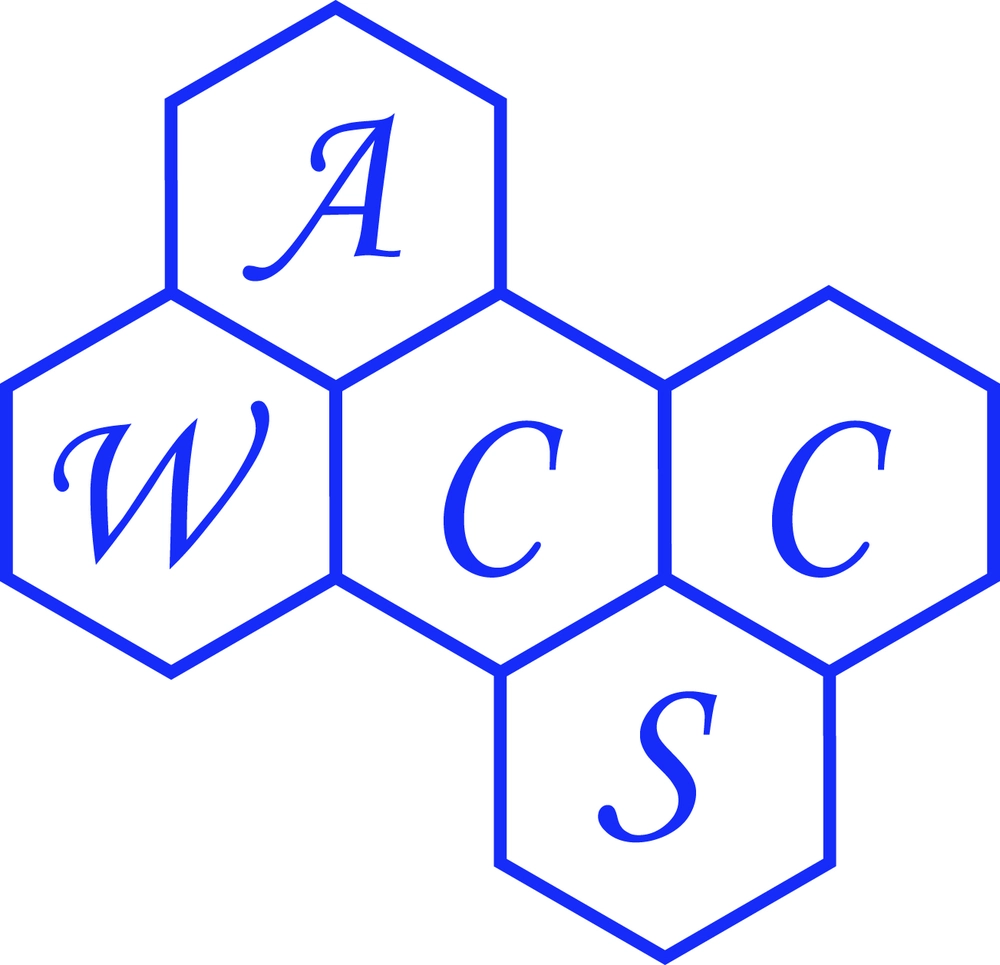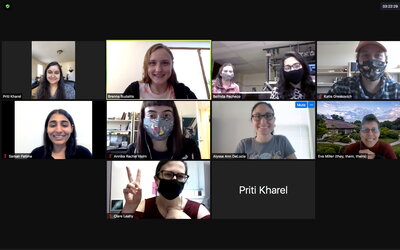
Running a chemistry demonstration that involves metal salts and flames for a group of middle schoolers can be challenging but imagine doing it virtually.
A group of Illinois chemistry graduate students did just that, successfully demonstrating “The Flaming Color of Fireworks” and other chemistry demonstrations for 32 Champaign and Urbana middle school students via Zoom during an all-virtual edition of the “Bonding with Chemistry” Day Camp for Girls on Dec. 5, 2020.

“Despite this being virtual, I thought it went really well and we were able to bring the camera up to the chemicals and flames to make it easy for everyone to see,” said Brenna Budaitis, a chemistry graduate student who was the event co-coordinator along with graduate student Priti Kharel. “This was really a great advantage of doing it virtually, because sometimes it can be difficult for a large group of people in-person to see everything that is happening in a demonstration. The two graduate students leading the demonstration were still able to make it interactive by having students type into the Zoom chat box their guesses on what color they thought the flame would be for each chemical.”
The annual day camp is organized by chemistry graduate students who are members of the ACS East Central Illinois Women Chemists Committee. This year, they faced a difficult decision whether to postpone or continue the event due to the limitations of social distancing.
Budaitis said they decided it was important to do the event partly because students are not getting the opportunity to participate in experiments at school this year.

“We thought this would be a great opportunity for both middle schoolers and graduate students to step away from the stress of this year’s circumstances and do something really fun and engaging, despite being socially-distanced,” she said. “Performing hands-on activities and learning the importance of science in the real world is such a critical aspect of learning. We are really fortunate to be living in a time with such advanced technology to allow us to be creative and adjust curriculums. With that, we wanted to take advantage of our resources to continue this event virtually and provide students the opportunity to engage in hands-on STEM activities from home.”
About 17 graduate students volunteered in various ways, including assembling kits for the students containing materials for each experiment, like pre-measured glue, cornstarch, and borax for a polymer experiment. Kits also included interactive notebooks, WCC Day Camp bag, pens, and pencils, a wallet periodic table, and an ACS mole. The kits were then shipped to the students.
During the event, camp participants were split into three Zoom breakout rooms where they participated in three hands-on experiments, each led by a graduate student who rotated through the breakout rooms. The station leaders used presentations to describe scientific terms and then led the students step-by-step through the experiments and engaged them with questions.
- In “Lights, Chemistry, Action!” led by graduate student Belinda Pacheco, students learned the different processes by which materials emit light and how scientists manipulate light to learn more about materials. Students built a homemade spectroscope using cardboard, tape, foil, and a CD. They were then able to use their spectroscopes to observe different light sources. At the end of the station, Belinda showed them two solutions that emit light: (1) luminol, which is used by detectives in crimes scenes, and (2) a dye solution, which is used in biology and medicine to stain cells for imaging.
- In the “Skittles Rainbow Chromatography” station led by graduate student Clare Leahy, students learned the importance of chromatography and how researchers use the technique. Students used chromatography to separate the different chemicals that make up the candy shells of skittles.
- In “The Bouncing World of Polymers” station led by graduate student Alyssa DeLucia, the students learned about polymers encountered on a daily basis, like cotton and nylon, which are in clothing and protein, and starches, which are in the foods we eat, and in rubber, which is basketballs. In their experiment, they mixed together glue, borax, water, and cornstarch to make bouncy balls and discovered that by changing the ratio of the ingredients, they could alter the properties of the ball.
Overall, Budaitis and Kharel said, the event had a cozy vibe as students sat comfortably in their homes doing the experiments.
“This really helped students open up to ask questions and chat with the group,” they said. “We were able to put across the message that science is ubiquitous as students were learning fundamental concepts using materials that are used in our everyday life, such as skittles or CDs, or glue and cornstarch. Although the event wasn’t perfect, it was incredible that we were able to do really exciting and relevant experiments virtually, which was something that wasn’t even a possibility during the time when we were in middle school.”
This year’s core volunteers were Annie Hooper and Katie Brady, advertisement co-coordinators; Rebecca Ulrich, email coordinator; Mara Paterson and Selena Hernandez, notebook co-coordinators; Joenisse Rosado-Rosa and Amie Lanzendorf, shipping/packaging co-coordinators; Belinda Pacheco, Alyssa DeLucia and Clare Leahy, station leaders.
And additional volunteers on event day were Katie Greskovich and Annika Holm, demonstration co-coordinators and question mediators; Saman Fatima, question mediator; Susanna Barrett, station helper; and department staff member Eva Miller delivered technology support.